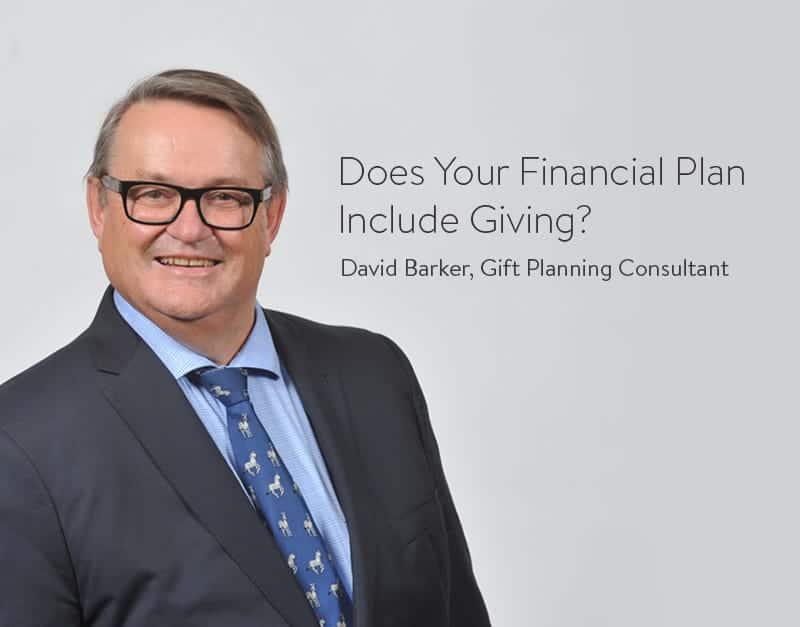Does Your Financial Plan Include Giving?

In the early years of our marriage, my wife Sharon and I often sat through our pastor’s annual sermon on tithing consumed by the feeling that we should do more. A serious discussion always followed, but with monthly bills, a mortgage, car payments, and school fees for our daughter, it was difficult to find the means. We had the desire to give to God’s work but we lacked the margin to do something about it.
A Giving Strategy
I spent many years promoting, teaching and conducting financial planning in the private sector before an obvious connection occurred to me. Why not make giving one of our financial goals? I realized that establishing a giving strategy would not only allow us to be more thoughtful and deliberate in our giving, but it would also help us to become better stewards of our financial blessings. We could finally contribute to our church and community the way we’d always wanted to.
A Growing Spirit of Generosity
Most financial advisors encourage people to save first, then spend what’s left. We determined our giving strategy should follow the same formula: give first, contribute to our savings next and then spend what’s left. Although less personal than putting money into the offering plate or writing a cheque to a charity, Sharon and I decided that an automatic debit strategy rang nicely of “first fruits.” We set up automatic withdrawals to coincide with payday, so the money was given before we could even miss it. Through this simple step, we soon discovered that thinking of others first had a surprisingly beneficial impact on our finances: Our spirit of generosity grew.
It Starts with Setting Goals
Financial planning starts with setting goals, and we decided our giving should too. We examined our financial situation and discussed our beliefs to determine what goals made sense for us. We decided we wanted to give away a certain percentage of our household income, and then set an amount. We approached this generosity goal just like any other financial plan, periodically taking stock and asking, “What percentage or amount are we giving, and how can we move closer to our desired goal this year?” These discussions got us thinking beyond dollars and cents, and we soon set an additional goal specifying an amount of time that we wanted to intentionally contribute to others.
Giving Spontaneously
As successful as our planned giving was turning out to be, Sharon and I both felt led to give spontaneously when a need moved our hearts. The sticking point, as always, was whether we had the money to give. To solve this issue, we set up a “flexible gifting account” in addition to our normal monthly giving. We now make regular contributions to this account, and we can draw funds from it as needed. This has allowed us to respond to appeals such as disaster relief, special programs at our favourite charity, mission trips or a capital program at our church.
With today’s giving on track, we are now working with our financial advisors to plan our giving for tomorrow. We continue to discuss what giving in retirement will look like, and even whether charitable life insurance makes sense. As our daughter is now grown, we have begun exploring adding our favourite charities as beneficiaries of our estates when we die. Planning our future giving this way is a natural complement to the giving strategy we’ve already established.

Contributed by David Barker
Gift Planning Consultant
David Barker is a Gift Planning Consultant at Abundance Canada. For more than 40 years, Abundance Canada has effectively helped Canadians with their charitable giving in their lifetime and through their estate. To learn more or arrange a free, no-obligation consultation, call 1.800.772.3257.




